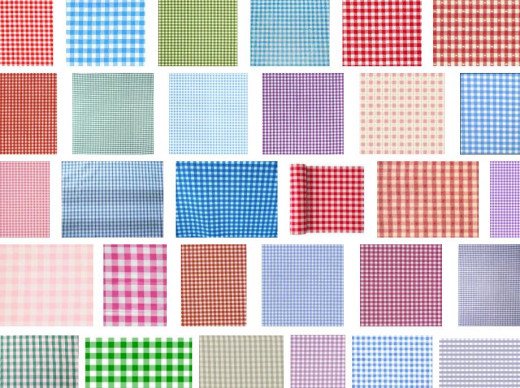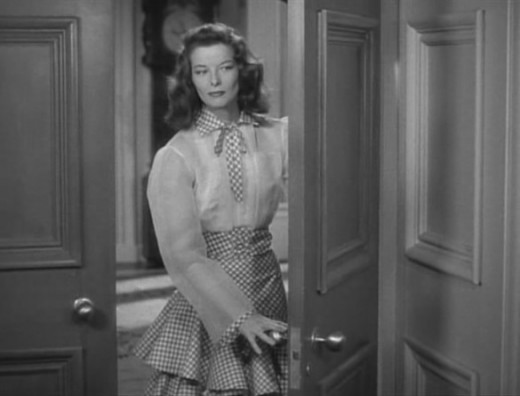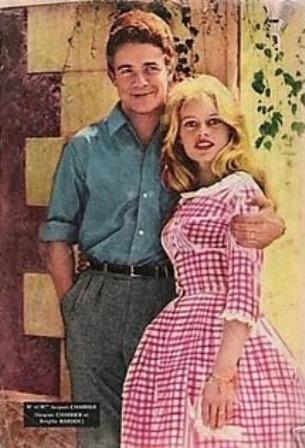Why Do We Call Gingham, Gingham?
Gingham

Gingham, that lovely simple fabric that evokes nostalgia, rockabilly and youth has been around for centuries and is a common around the globe. From the African Masaï tribe who has worn gingham as part of their national costume for thousands of years to the iconic image of Judy Garland as Dorothy Gale in the Wizard of Oz, gingham has been a part of the global culture.
So, why is it called gingham? What kind of word is gingham? Much like houndstooth, the name gingham originally got its name for how it looked. Although many countries claim gingham as their own fabric, the word comes from the Malaysian word for striped, “genggang.”
I know what you’re thinking. “Gingham isn’t striped; it’s checked.” You are correct. We can all thank the 17th century British textile makers for the gingham we all know and love today. Textile makers in Manchester England could not leave well enough alone; perhaps it was their love of houndstooth and Glenn plaid that made them experiment with adding perpendicular stripes. They are the inventers of the checkered version that is gingham today.

Gingham is Global
Gingham can be found in nearly every corner of the globe due to its many wonderful properties. It’s easy and inexpensive to manufacture and launder. It’s hard-wearing and the design is simple and timeless.
Gingham is made of carded or combed yarns, which means the fibers (linen, cotton, or wool), are pulled through a comb which both cleans and separates the fibers before it is spun into yarn. The yarn is then woven into fabric. The colored parts of the gingham come from the warp or lengthwise yarns and they always run along the grain or the weft of the fabric.
The United States began manufacturing gingham in the 18th century. Prior to that, it had to be imported from Europe.
Gingham Goes to Hollywood


Gingham Gains Momentum
With England and America setting up local textile mills to produce gingham, citizens were encouraged to adopt the pattern and support local industry. Gingham started as a household fabric used for everything from table linens to curtains.
In Europe gingham became associated with the country-side and wholesomeness. The gingham shirt became the symbol of the American cowboy. The French, who call gingham “Vichy” because it was manufactured in the Vichy region, were the first to use gingham in everyday fashions. By the 19th Century gingham was being used in the US for clothing and home furnishings and was popular for men, women and children. It was produced in local textile mills and supported local economies.
In the 1920s gingham was a favored fabric for summer fashions, children’s clothing, school uniforms and playsuits because of its durability. Available in a variety of colors, and because it was lightweight made it a popular summer fabric. Also, people were eager to get away from the heavy layers and ornate ensembles of the Victorian Age.
Advances in technology after World War I also helped advance the humble textile. Interior design had become fashionable and affordable and the kitchen became less utilitarian and more a hub of the house. Durable, fuss-free and clean gingham was the perfect fabric choice for kitchens everywhere.
Thanks to Hollywood, gingham continued to be popular into the 1940s. Would Dorothy have evoked the image of home and wholesomeness if she had not been clad in her iconic blue gingham dress in the 1939 classic, Wizard of Oz? Katherine Hepburn proved gingham could also be stylish for grown women, too in Philadelphia Story. Dorothy Lamour was glamorous in gingham in And Angels Sing. Gloria Grahame wore gingham in Blond Fever. Gingham was a favorite of costume designer Adrian, who put many actresses in gingham including Hepburn and Garland.
Fabric scarcities due to World War II further sealed gingham’s place as the durable, fashionable fabric to count on. Easy to wear and easy to mend it was used to make everything from bathing suits and curtains to ladies dresses.


Gingham in Post War America
In the post war era and through the 1950s there was a yearning to get back to simpler times and gingham continued to be popular, especially as the symbol of wholesome womanhood.
Doris Day, Patsy Cline, First Lady Jacqueline Kennedy, Audrey Hepburn and Grace Kelly were all fashion icons clad in gingham. Marilyn Monroe and Brigit Bardot proved gingham could also be sexy. Bardot brought Vichy chic to Paris when she married Jacques Charrier in a pink and white gingham wedding gown by couturier Jacques Estérel.
The 1960s with its youth culture and mod styles didn’t slow down the popularity of gingham at all. Young people embraced it. Sean Connery looked sexy and charming in a blue and white gingham shirt with his swimming trunks in From Russia with Love and again in Thunderball in pink gingham. Yes, real men wear pink gingham.
By the 1970s gingham had started to lose some of its popularity but it never when completely away and continued to be popular for children’s clothing and home décor.
Current Trends in Gingham
Thanks to retro and vintage loving fashionistas and rockabilly fellas and gals everywhere, gingham is gaining in popularity again. No rockabilly girl’s wardrobe is complete without a gingham swing dress and a gingham blouse. Gingham is nostalgic and brings to mind simpler times, something many people long for in these modern times.
Gingham is still popular for children’s nurseries, kitchens and shabby chic, country cottage and French country interior design.
Remember those textile designers in Manchester? In keeping with their heritage, British Football (Soccer) team, Manchester United has chosen gingham shirts made of recycled polyester as part of their uniform wardrobe.
Want to read more about textiles?
- Take a Bite Out of Style With Houndstooth
Houndstooth is classic print that is back in style. Give your wardrobe or décor some bite with this iconic print. - Why Do We Call Polka Dots Polka Dots?
Why do we call Polka Dots, Polka Dots. Take a trip through time to learn the fascinating history and meaning of the humble polka dot. - http://tess45.hubpages.com/hub/SpringSummer-2010-Fashion-Trend-Polka-Dots
Polka Dots are fashionable again. Work them in to your wardrobe.



